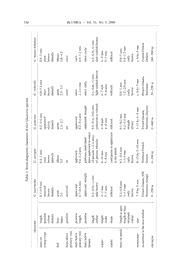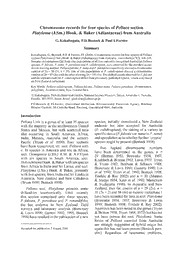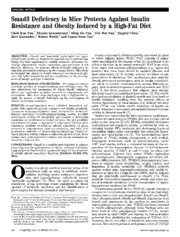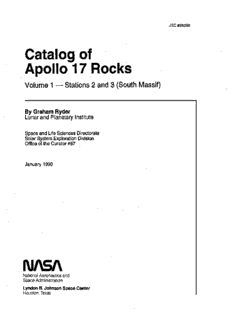
Apollo 17 Lunar Sample Catalog Part 1 Stations 2 and 3 PDF
Preview Apollo 17 Lunar Sample Catalog Part 1 Stations 2 and 3
JSC#26088 Catalog of Apollo 17 Rocks Volume 1-- Stations2 and3 (SouthMassif) By Graham Ryder Lunar and PlanetaryInstitute Space and Life Sciences Directorate Solar System Exploration Division Office of the Curator #87 January 1993 NASA NationalAeronautics and SpaceAdministration Lyndon B.JohnsonSpace Center Houston,Texas Catalog of Apollo 17 Rocks Volume 1u Stations 2 and 3 (South Massif) By Graham Ryder LunarandPlanetaryInstitute NASNJohnson Space Center Houston,Texas 77058 U.S.A. January 1993 ACKNOWLEDGEMENTS The work ofproducing this volume was accomplished inan excellent manner byAnita Dodson (Lockheed), who transformed rough input into professional output and organized the production virtually single-handedly. She remained cheerful through missed deadlines and broken promises about input, and greatly encouraged work toget done under sometimes difficult circumstanees. This volume was conceived and promoted by the Lunar and Planetary Sample Team under various chairmen, and has taken an inordinate number of years toreach fruition. Itwas produced with the cooperation of John Dietrich and Jim Gooding, successive Lunar Sample Curators. They provided the facilities needed todo the work: office space, computer assistance, and access to the curatorial laboratories, thin sections, and data center, as well as allocation of personnel to the production. I greatly appreciate the help of the data center personnel (alphabetically) Margo Albores, Sue Goudie, Jenny Seltzer, and Lee Smith, who assisted with the data pack and thin section retrieval, and Carol Schwarz and Linda Watts who did some of the proofing. I thank various people who have provided photographs or unpublished data and other assistance inclarifying some details. In particular, I thank PaulWarren for supplying some photographs and information, Klaus Keil for returning a large number of thin sections, and Odette James for supplying a large number ofreprints. I appreciate the acquiescence of David Black, the Director of the Lunar and Planetary Institute, tomy use of time for this project. The Lunar and Planetary Institute operates under NASA ConWact #4574. This volume is Lunar and Planetary Institute Coutribution # 805. CONTENTS Introduction ..................................................................................................... v The Apollo 17Mission ......................................................................... v Apollo and Luna Sampling Locations ................................................. vi Apollo 17 Landing Site Region .......................................................... vii Apollo 17Traverse Area .................................................................... viii Numbering of Apollo Samples ............................................................. x Sample Inventory ......................................................................................... xiii Sample Descriptions ........................................................................................ 1 References .................................................................................................... 355 INTRO_v INTRODUCTION The Catalog of Apollo 17 information on the sample, as dissection and allocations of rocks is a set ofvolumes that well as some unpublished the samples is preserved in the characterize each of 334 information. References Data Packs in the Office of the individually numbered rock which are primarily bulk Curator. samples (79 larger than 100 g) interpretations of existing data in the Apollo 17collection, or mere lists of samples are Where possible, ages based showing what each sample is not generally included, on Sr and Ar isotopes have and what is known about it. Foreign language journals been recalculated using the Unconsolidated regolith were not scrutinized, but little "new" decay constants samples are not included. The data appears to have been recommended by Steiger and catalog isintended to be used published 9_0.!yin.1such J[iger (Earth Planet. Sci. byboth researchers requiring journals. We have attempted Lett. 36, 359-362); however, sample allocations and a broad to be consistent in format in many of the reproduced audience interested in Apollo across all ofthe volumes, and diagrams the ages correspond 17rocks. The volumes are have used a common with the "old" decay arranged geographically, with reference list that appears in constants. In this volume, separate volumes for the all volumes, mg' or Mg' = atomic Mg/(Mg South Massif and Light +Fe). Mantle; the North Massif; and Much valuable information two volumes for the mare exists in the original Apollo plains. Within each volume, 17Lunar Sample Information THE APOLLO 17 the samples are arranged in Catalog (1973) based on the MISSION numerical order, closely intense and expert work of the corresponding with the Preliminary Examination On December 11, 1972, the sample collection stations. Team. However, that catalog Apollo 17lunar excursion The present volume, for the was compiled and published module "Challenger," South Massif and Light only four months after the descending from the Mantle, describes the 55 mission itself, from rapid Command Service Module individual rock fragments descriptions of usually dust- "America," landed in a valley collected at Stations 2, 2A, 3, covered rocks, usually near the edge of Mare and LRV-5. Some were without anything other than Serenitatis (Figures 1and 2). chipped from boulders, others macroscopic observations, It was the sixth and final collected as individual rocks, and less often with thin landing in the Apollo some by raking, and a few by sections and a little chemical program. Astronauts Eugene picking from the soil in the data. In the nearly two Ceman and Harrison Schmitt processing laboratory, decades since then, the rocks spent 72 hours at the site, have been substantially named Taurus-Littrow from Information on sample subdivided, studied, and the mountains and a crater to collection, petrography, analyzed, with numerous the north. The site was chemistry, stable and published papers. These make geologically diverse, with the radiogenic isotopes, rock the original Information mountain ring of the surface characteristics, Catalog inadequate, Serenitatis basin and the lava physical properties, and outmoded, and in some cases fill in the valley. The main curatorial processing is erroneous. However, that objectives of the mission were summarized and referenced as Catalog contains more to sample very ancient far as it is known upto early information on macroscopic material such as pre-Imbrian 1992. The intention has been observations for most samples highlands distant from the to be comprehensive--to than does the present set of Imbrium basin, and to sample include allpublished studies volumes. Considerably more pyroclastic materials believed of any kind that provide detailed information onthe vi--INTRO Figure 1: Apollo and Luna sampling sites on the near side of the Moon. $84-31673 pre-mission to be substantially from a landslide from the characterize and document the younger than mare basalts South Massif. The traverses site. Descriptions of the pre- collected on previous totalled more than 30km, and mission work and objectives, missions, nearly 120 kg of rock and soil the mission itself, and results were collected (Figure 3). are described in detail in the The crew spent more than 22 This total sample mass was Apollo 17Preliminary Science hours on the lunar surface, greater than on any previous Report (1973; NASA SP-330) using the rover to traverse mission. An Apollo Lunar and the Geological across the mare plains and to Surface Experiments Package Exploration of the Taurus- the lower slopes of the South (ALSEP) was set upnear the Littrow Valley (1980; USGS and North Massifs, and over a landing point. Other Prof. Paper 1080), and others lightmantle in the valley that experiments and numerous listed in the bibliography at appeared to have resulted photographs were used to the end of this section. Many INTRO--vii Figure 2: Apollo 17 landing site region showing major geographic features. ASI7-M-447 of the rock samples have been ofthe order of 1400m thick, valley fill and part ofthe studied in detail, and some, The sequence consists of nearby highlands. However, particularly massif boulders, several different types of they were found to be not have been studied in co- basalt thatcannot easily be considerably younger than ordinated fashion in formal related toeach other (or other Apollo volcanics, but consortia. Apollo 11high-Ti mare only slightly younger than the basalts) by simple igneous valley fiU.These glasses too The valley floor samples processes, but instead reflect arehigh-Ti basalt in demonstrate that the valley varied mantle sources, composition. The orange consists of a sequence of mixing, and assimilation, glasses occur in the rocks high-Ti mare basalts that were Orange glass pyroclastics only as components of some mainly extruded 3.7 to 3.8 Ga were conspicuous, and is the regolith breccias. ago. The sequence is perhaps unit that mantles both the viii--INTRO SouthMassif Figure 3: Apollo 17 traverse and sample collection map. The sampling ofthe massifs chemistry to first type, butis which formed meter-sized was directed at coherent more aluminous and much clasts or individual boulders), boulders and some rocks, and poorer in TiO2. It contains a as well as more evolved types are dominated by a particular much greater abundance and including gabbros and type of crystalline impact melt variety ofclast types. Opinion felsic/granitic fragments. breccia. This is found on both still differs as to whether these Feldspathic granulites are massifs, and is characterized aphanites are a variant of the common asclasts in the melt by an aluminous basalt Serenitatis melt orrepresent matrices (both aphanitic and composition and a poikilitic something distinct. Both poikilitic) and occur as a few groundmass. The samples are aphanitic and poikilitic melts small individual rocks. widely interpreted as part of seem to be most consistent Geochronology shows that the impact melt produced by with an age ofclose to 3.87 many of these granulites and the Serenitatis basin event (+/- 0.02) Ga. A few rare pristine igneous rocks date itself. A second type of impact samples ofimpact melt have back asfar as 4.2 and even melt, dark and aphanitic, is distinct chemistry. Other rock 4.5 Ga. The purer soils of the represented only by samples and clasts are pristine igneous South Massif contain more from the South Massif rocks, including dunite, alumina and only half of the stations. It is similar in troctolite, and norite (some of incompatible element budget ]]¢£RO--ix ROCK SAMPLE COLLECTION SITES Rakes72735- 72738-o ,=NE Pan • Gomon lC _LRV A 72415 -18, 72435_t_ .72255, 72275, •_.1 w72215,* 72235* N & • = 72505,Rakes72535- 72559 ? | • \72315, 72335, 72355, • SWPan 72375,72395 0 10 20 30 40m I I I I i Planimetric Map of Station 2 _"'_ 73225, 73235,73245, >_ 73255, 73275 ..._._._..._./._ ---- PanA 73215-219 ©0 ° N t 0 10 20 30m I I I I Planimetric Map of Station 3 NotShown: 2A(LRV-4)73145, 73146,73155, 73156 LRV-5 74115- 74119 x--INTRO ofthe dominant impact melt Schmitt H..H. (1973) Apollo The first digit (7) is the rocks, demonstrating that the 17report on the valley of mission designation for massifs, representing pre- Taurus-Littrow. Science Apollo 17(missions prior to Serenitatis material, have a 183, 681-690 Apollo 16used the first two component not well digits). As with Apollo 15 represented in the larger Wolfe E. W. and others and 16numbers, the Apollo collected samples. (1981) The geologic 17numbers are grouped by Conspicuously absent, and Investigation ofthe Taurus- sampling site. Each group of not the "missing" component Littrow valley: Apollo 17 one thousand numbers applies in the soil, is ferroan landing site. U.S. Geological to an area as follows: anorthosite, common at the Survey Prof. Paper 1080. Apollo 16site and widely The first numbers for each believed to have formed an area were used for drill stems, early lunar crust, drive tubes, and the SESC. NUMBERING OF Drill stem sections and double APOLLO 17 SAMPLES drive tubes are numbered BIBLIOGRAPHY from the lowermost section As in previous missions, five upward. Apollo Field Geology digit sample numbers are Investigation Team (1973) assigned each rock (coherent The last digit is used to code Geologic exploration of material greater than about 1 sample type, in conformity Taurus-Littrow: Apollo 17 cm), the unsieved portion and with the conventions used for landing site. Science 182, each sieve fraction of scooped Apollo 15and Apollo 16. 672-680 <1 cm material, the drill bit Fines from a given and each drill stem and drive documented bag are ascribed Apollo Lunar Geology tube section and each sample numbers according to: InvestigationTeam (1973) ofspecial characteristics. Documentation and environment of the Apollo 17 samples: A preliminary report. Sampling Site Initial Number U.S. Geological Survey Interagency Report: LM, ALSEP, SEP, and samples collected Astrogeology 71. betweenStation5andtheLM 70000 Apollo 17Preliminary Station1A 71000 Examination Team (1973) Apollo 17lunar samples: Station2andbetweenitandtheLM 72000 Chemical and petrographic description. Science 182, Station 3 and between itand Station 2 73000 659-672 Station 4 and between itand Station 3 74000 Apollo 17Preliminary Science Station5andbetweenitandStation4 75000 Report (1973) Aeronautics and Space Station 6and between itand the LM 76000 Administration SP-330 Station 7 and between itand Station 6 77000 Bailey N.G and Ulrich G.E. (1975) Apollo 17 voice Station 8 and between itand Station 7 78000 transcript pertaining to the geology of the landing site. Station9andbetweenitandStation8 79000 U,$, Geological Survey Rept.
Description:The list of books you might like

The Strength In Our Scars

Credence

The 48 Laws of Power

What Happened to You?

Verso l'ora zero
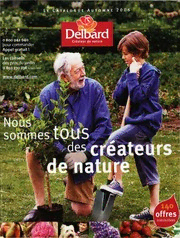
Delbard Créateur de Nature, Catalogues de Pépiniéristes, Automne 2006
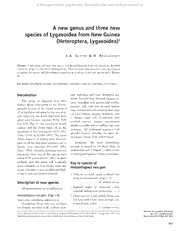
A new genus and three new species of Lygaeoidea from New Guinea (Heteroptera, Lygaeoidea)
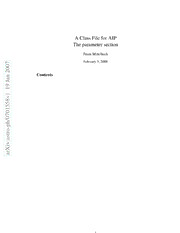
UVES - VLT High Resolution Spectroscopy of GRB Afterglows

Relationship Marketing: Strategy and Implementation (The Chartered Institute of Marketing series)

Capitalizing on Content: A Compelling ROI for Change - AIIM

Manual de terapia de conducta
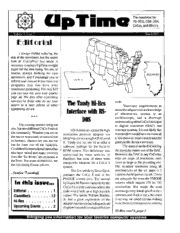
Up Time Newsletter Volume 01 Number 07
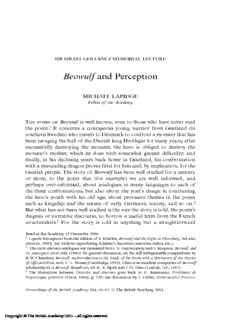
by Michael Lapidge
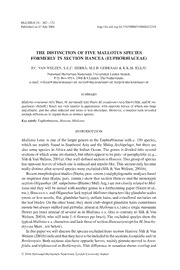
The distinction of five Mallotus species formerly in section Hancea (Euphorbiaceae)
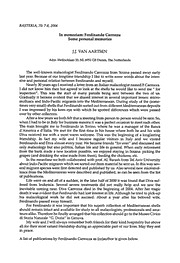
In memoriam: Ferdinando Carrozza. Some personal memories
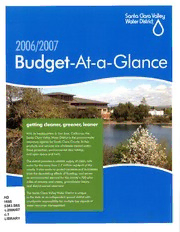
Budget-At-A-Glance, 2006-07
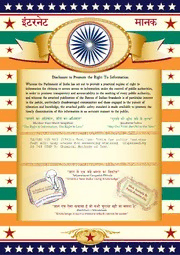
IS/ISO 105-A03: Textiles- Tests for colour fastness Part A02- Grey scales for assessing staining (Superseding IS 769
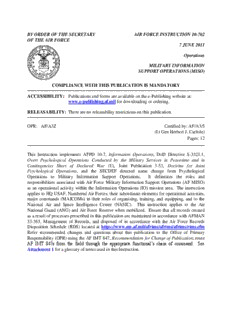
by order of the secretary air force instruction 10-702 of the
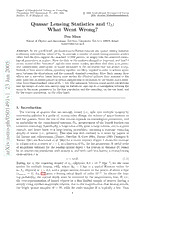
Quasar Lensing Statistics and Omega_Lambda: What Went Wrong?

